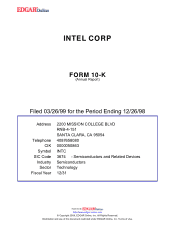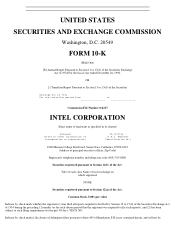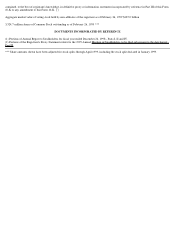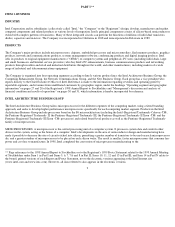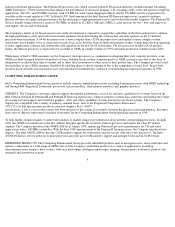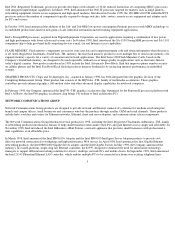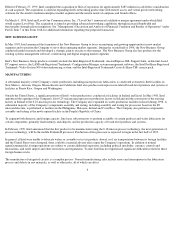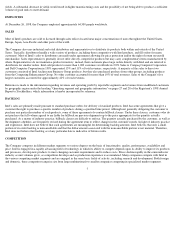Intel 1998 Annual Report Download - page 9
Download and view the complete annual report
Please find page 9 of the 1998 Intel annual report below. You can navigate through the pages in the report by either clicking on the pages listed below, or by using the keyword search tool below to find specific information within the annual report.yields. A substantial decrease in yields would result in higher manufacturing costs and the possibility of not being able to produce a sufficient
volume of good units to meet demand.
EMPLOYEES
At December 26, 1998, the Company employed approximately 64,500 people worldwide.
SALES
Most of Intel's products are sold or licensed through sales offices located near major concentrations of users throughout the United States,
Europe, Japan, Asia-Pacific and other parts of the world.
The Company also uses industrial and retail distributors and representatives to distribute its products both within and outside of the United
States. Typically, distributors handle a wide variety of products, including those competitive with Intel products, and fill orders for many
customers. Most of Intel's sales to distributors are made under agreements allowing for price protection and/or the right of return on unsold
merchandise. Sales representatives generally do not offer directly competitive products but may carry complementary items manufactured by
others. Representatives do not maintain a product inventory; instead, their customers place large orders directly with Intel and are referred to
distributors for smaller orders. Intel sold products to more than 1,000 customers worldwide in 1998. Sales to Compaq Computer Corporation
and Dell Computer Corporation in 1998 represented 13% and 11% of total revenues, respectively. A majority of the sales to these two
customers consisted of Intel Architecture Business Group products, but they also purchased products from other groups, including products
from the Computing Enhancement Group. No other customer accounted for more than 10% of total revenues. Sales to the Company's five
largest customers accounted for approximately 42% of total revenues.
Reference is made to the information regarding revenues and operating profit by reportable segments and revenues from unaffiliated customers
by geographic region under the heading "Operating segment and geographic information" on pages 27 and 28 of the Registrant's 1998 Annual
Report to Stockholders, which information is hereby incorporated by reference.
BACKLOG
Intel's sales are primarily made pursuant to standard purchase orders for delivery of standard products. Intel has some agreements that give a
customer the right to purchase a specific number of products during a specified time period. Although not generally obligating the customer to
purchase any particular number of such products, some of these agreements do contain billback clauses. Under these clauses, customers who do
not purchase the full volume agreed to are liable for billback on previous shipments up to the price appropriate for the quantity actually
purchased. As a matter of industry practice, billback clauses are difficult to enforce. The quantity actually purchased by the customer, as well as
the shipment schedules, are frequently revised during the agreement term to reflect changes in the customer's needs. In light of industry practice
and experience, Intel does not believe that such agreements are meaningful for determining backlog amounts. Intel believes that only a small
portion of its order backlog is noncancellable and that the dollar amount associated with the noncancellable portion is not material. Therefore,
Intel does not believe that backlog as of any particular date is indicative of future results.
COMPETITION
The Company competes in different market segments to various degrees on the basis of functionality, quality, performance, availability and
price. Intel is engaged in a rapidly advancing field of technology in which its ability to compete depends upon its ability to improve its products
and processes, develop new products to meet changing customer requirements and to reduce costs. Prices decline rapidly in the semiconductor
industry as unit volumes grow, as competition develops and as production experience is accumulated. Many companies compete with Intel in
the various computing market segments and are engaged in the same basic fields of activity, including research and development. Both foreign
and domestic, these competitors range in size from large multinationals to smaller companies competing in specialized market segments.
7

